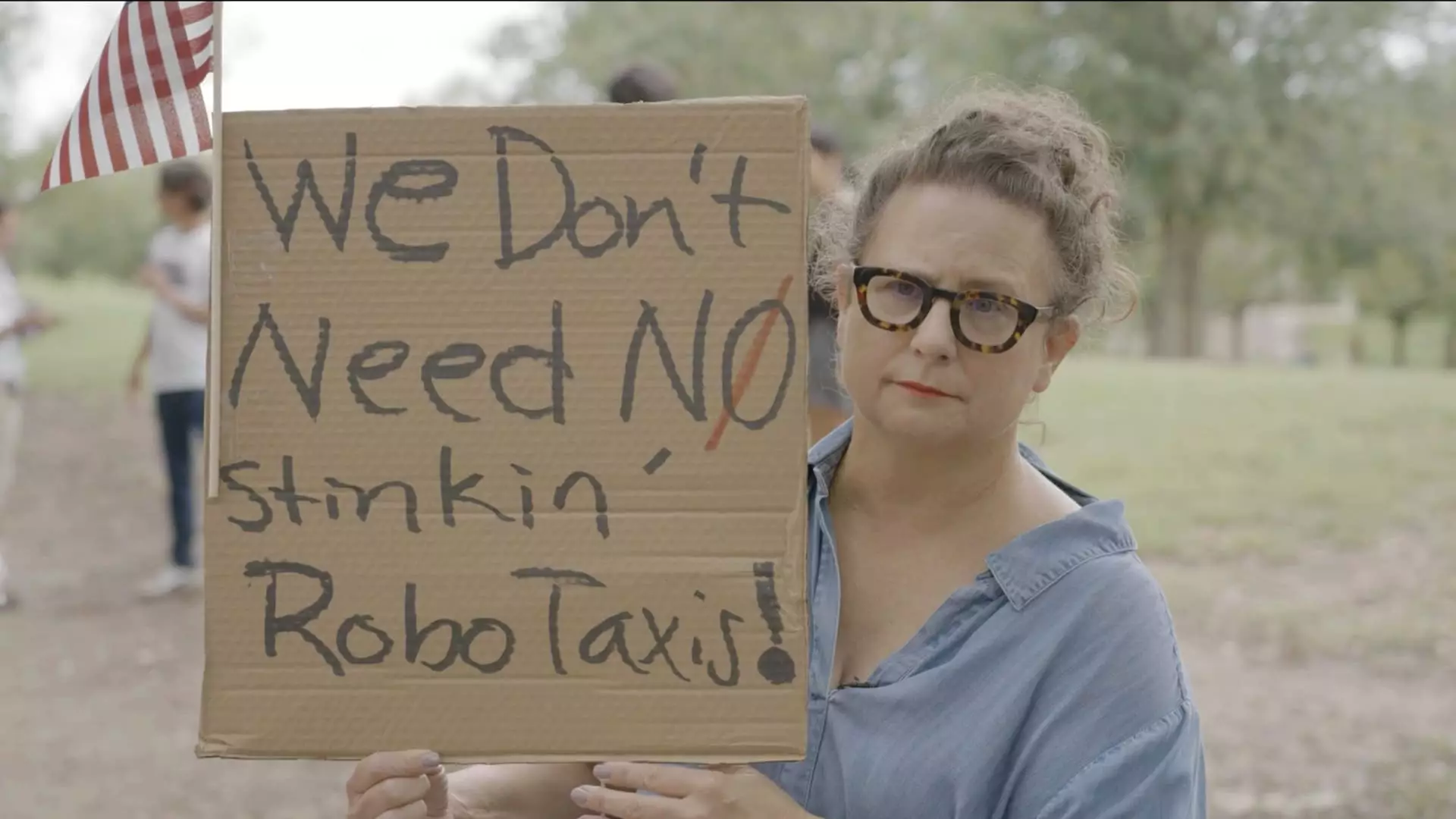As Tesla prepares to launch its pilot robotaxi service in Austin, Texas, slated for June 22, a wave of dissent is bubbling beneath the surface. This initiative, spearheaded by Elon Musk, promises a transformative leap in transportation—a self-driving taxi that could redefine urban mobility. However, public safety advocates and political dissenters have taken to the streets, voicing valid concerns about the feasibility and safety of such technology. Their protests embody a growing unease that perhaps, the rush to innovate is overshadowing critical safety considerations.
Participants from groups like the Dawn Project and Resist Austin have assembled to challenge Musk’s push for robotaxis, criticizing the existing safety issues linked with Tesla’s advanced driver-assistance systems (ADAS). While technology has undoubtedly evolved, data shows that Tesla’s Autopilot and Full Self-Driving (FSD) features have been implicated in numerous traffic mishaps, contributing to fatalities that resonate deeply within communities. At the crux of the opposition lies a fundamental question: Can Tesla prioritize safety while pursuing groundbreaking technology?
A Clash of Ideologies: Innovation vs. Safety
The tensions at play extend beyond mere safety metrics. Critics are also concerned about Musk’s affiliations with political figures, particularly the Trump administration, which has sparked distrust among various advocacy groups. This political backdrop amplifies apprehensions about Musk’s integrity and intentions as he devotes immense resources to developing a technology that many fear is untested and potentially dangerous.
Demonstrations have showcased the dangers that might lurk within Tesla’s FSD systems, revealing them in a controversial light. Activists, armed with a Tesla Model Y retrofitted with the latest FSD software, conducted a demonstration that startled onlookers: the vehicle zoomed past a simulated school bus stop, endangering a mannequin mimicking a child. While the demonstration intended to shed light on inherent flaws, it indeed raises ethical considerations regarding how these technologies are marketed and should be regulated.
The Road Ahead: Bridging the Gap with Transparency
The desire for transparency surfaces repeatedly in discussions about Tesla’s autonomous initiatives. Observers, including concerned citizens at protests, express their frustrations about the lack of accessible safety testing results, creating a divide that feels increasingly insurmountable. Stephanie Gomez, one of the protest attendees, emphasized a loss of confidence in Musk’s vision, not merely due to past technical failures but also due to an overarching silence about safety measures that should accompany these innovations.
This standoff illustrates a broader societal challenge: how do we properly balance groundbreaking technological advancements with the collective responsibility to ensure public safety? With voices of dissent rising, it becomes clear that robotics and AI must not only be visionary but should also prioritize ethical practices and safety. As the world tiptoes into an era of autonomous vehicles, it is vital that stakeholders—including manufacturers, governments, and the public—foster a culture of accountability and transparency, ensuring that the road to the future is as safe as it is innovative.
The tension between innovation and safety in Tesla’s journey toward establishing a robotaxi service serves as a poignant reminder that the pursuit of progress must never compromise the well-being of society.

